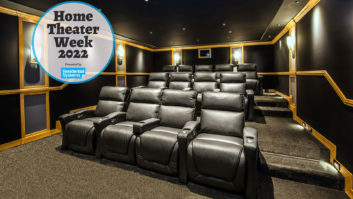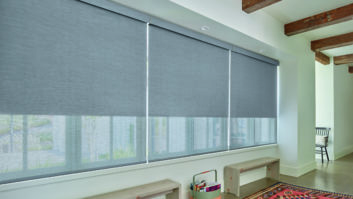Collaborating On A Theater Design Adds Profit Opportunities
One of the greatest missed opportunities of home theater design is the potential for collaboration. Often integrators ignore interiors, design professionals overlook integrators, builders dismiss essential features, and architects don’t want to be bothered.

If the ESC and interior designer are willing to bend and work together, the outcome can be better than any one team member working alone. Visit http://tinyurl.com/ylz8rct for a slideshow about this project from Signals AV.
Private theaters are joint efforts. Architecturally, a private theater is a room that has potential to impact the other living spaces within the structure of the home. Aesthetically the theater setting is part of a larger environment designed for a desired look and feel. Structurally, theater rooms embody all the subsystems (hopefully with the exception of plumbing) found in any residential construction project. Operationally the system must be equipped to suit the room. Functionally the environment has to be engineered to deliver performance. Most importantly, experientially, the result must thrill the client and prove to be worth the effort.
THE FUNDAMENTALS
Successful collaboration starts with a clear demarcation of scope. This can be a delicate subject, because many professionals have strong egos. We have found it best to engage very early in the process and educate our colleagues on specific concerns. Professionals who are secure in their capabilities are more likely to cooperate when informed of our purpose. As an example, the architect on a recent project had provided a “footprint” for the theater that called out a niche for equipment storage and a double door entry and location. Additionally, the original drawings called for poured concrete seating platforms. We spoke with the architect and presented our case for remote, airconditioned equipment storage, a single acoustically rated door at a more optimum location, and the reasons for a framed seating platform with decoupled construction. Once the reasons for our suggestions were understood, the architect became a willing and vital partner in the design process, ultimately offering suggestions of his own which resulted in an award-winning private theater.
ACHIEVING COMPROMISE
Demarcation is not always black and white. It is not accurate to say that the theater designer provides all the functional engineering and the interior designer provides all the décor. In some cases, functional preferences of a theater designer may not fit well with the aesthetic goals. For instance the requirement of acoustical substrate generally indicates fabric on most, if not all, wall surfaces.
The interior designer may have a different vision for the room. The fact is that the interior designer usually has a good grasp of the client’s décor preferences. We recently worked with the design team to substitute engineered acoustical millwork surfaces, combined with fabric sections, which resulted in a noncompromising compromise. Both objectives of the design team were met.

Sam Cavitt (samcavitt@medesign. tv) is president of Paradise Theater, a division of Media Environment Design Inc., located in Kihei, Hawaii, and Carlsbad, California.
Fabric, too, can be confusing. Typical acoustical fabric selections disappoint the interior designer and typical decorator fabrics will not function acoustically. If either member of the team is inflexible, an impasse may result and performance and the client will suffer. If both members are willing to bend and work together, the collaborative outcome can be better than any one team member working alone.
KEEPING THE CLIENT IN MIND
It is our collective responsibility to work effectively as a team to exceed our client’s expectations and deliver excellence. This does not mean we should lay our professional knowledge aside.
If the client is asking for something that cannot work or is not aware of negative impact of a suggestion they may have, we must be willing to advise them. As an example, many clients will eschew the construction of a quiet room, stating something like, “It’s just the two of us, and we always watch movies together,” or “It won’t bother me if I can hear the plumbing and air conditioning in my theater, I hear it in other parts of the house”. Remember, when your client misses the subtle details that the director has interwoven into the film or cannot use the theater because the spouse is being disturbed from peaceful sleep, then we must take the blame ourselves for not earning our fee as professionals experts.







